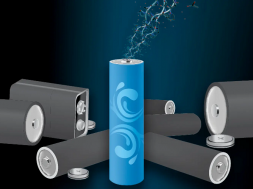
The aerospace and defense industry is transitioning from an older to younger workforce, but it faces intense competition for talent. It needs a radical response.
Aerospace and defense (A&D) players have faced increasing competition for the best talent, including from tech companies and start-ups that offer a compelling value proposition. While the situation is dynamic, especially in light of recent moves by some tech companies to slow hiring, competition for talent will remain hot, notably in high-demand roles where there is a shortage of talent. From skilled trades to traditional engineers and software engineers, labor challenges have proved to be a persistent rate limiter to growth and performance. In response, the A&D industry should take radical action. That will mean more effectively showcasing its advantages, developing and continuously reskilling talent at scale, and establishing mechanisms that foster long-term employee stickiness.
McKinsey research on the health and trajectory of the A&D labor market confirms the realization playing out across the sector; namely, that the industry faces headwinds as it increasingly navigates from a “gray” to “green” workforce.1 One well-documented driver is demographic2: a wave of retirements are on the horizon, reflecting the fact that about a third of industry employees are aged 55 or older. And there are other factors at play, including a widely discussed shift in preferences for different types of career and work conditions.3 This cuts across age segments, but it is especially true among younger cohorts (Exhibit 1).

Another powerful factor shaping the A&D jobs market since the COVID-19 pandemic is increased employee willingness to switch. The Great Resignation has become an established phenomenon, with studies showing that 46 percent of employees are thinking about changing jobs in the next three to six months—a proportion that has remained steady over the past year.4 Moreover, younger employees are twice as likely as veterans to get itchy feet.
The result of these dynamics is that A&D companies are seeing talent replacement rates fall. And as the gray generation retires, and younger employees move jobs more frequently, essential skills are being lost. Meanwhile, the number of mechanical and electrical engineering roles is outweighed by more lucrative software opportunities, sometimes by as much as a factor of 13.5 A&D companies pay entry-level software engineers about half as much as technology giants—so it is unsurprising that tech talent outflows are potentially twice the rate of inflows.6 As technology education continues to proliferate beyond the traditional four-year-college degree, A&D companies will likely need to widen their aperture to include boot camps or community colleges.
As the A&D industry falls behind its competitors on pay, graduate engineers are spreading their nets wider, and fewer than previously see their future in A&D—evidenced by an 8 percent decline in the industry’s hiring of aerospace, aeronautical, and astronautical engineer graduates over the past five years. Despite a doubling in the number of computer engineer graduates, A&D has seen a 7 percent fall in postgraduate employment over the same period.7 This indicates the difficulty that A&D companies face in hiring from traditional sources and highlights the need for concerted action, even hiring from nontraditional sources, to maintain a competitive edge.
Different creatures
Green employees are different creatures than their gray counterparts. Beyond traditional demographic variations, younger employees come to the market in an alternative state of mind.8 Their attitudes are influenced by a world defined by instantaneous information, on-demand services, same-day delivery, real-time status tracking, and socializing online—all of which have shaped their career expectations. Our research shows six key factors that are likely to top the green generation’s agendas:
- A frictionless talent acquisition experience,9 and the willingness to go elsewhere to get it. A confusing application workflow, lack of communication, and significant time to hire can be major detractors.
- More visible and rapid career progression and a desire to understand how they compare to others. According to LinkedIn, Gen Z employees are transitioning jobs at a faster rate than other generations.
- Compelling and engaging communications, as influenced by a significant preference for consuming news and information on social media.
- Hybrid flexibility and intentionality. Hybrid has become the norm for younger workers. They are clear that face-to-face needs to be intentional and value added.12 If hybrid is revoked, they are 59 percent more willing to leave their jobs than older colleagues.
- Career optionality. Green employees expect to engage with multiple employers and even multiple careers.14 They are also more likely to consider a side job or “hustle” alongside their full-time role.
- High expectations on diversity, inclusion, and sustainability. Younger employees are more likely to expect a more inclusive workplace that allows for self-expression and sanctions noninclusive behavior,15 and they place a much higher premium on sustainability.
Faced with new expectations, the A&D industry lags its tech and auto peers on many of the touchstone perceptions of the employee value proposition. It is behind on culture and values, diversity and inclusion, leadership, and speed, only leading in motivation (Exhibit 2).

Getting on the front foot
There are significant performance implications of misunderstanding the needs of the green talent market. Indeed, many A&D companies are already feeling the talent burn, with recent earnings calls commonly featuring discussions around talent and staffing challenges. These, in some cases, were presented as reasons for delays and weaker earnings projections.17 To change their direction of travel, A&D companies require a departure from established ways of thinking and working. They should go on the offensive on talent, reinventing hiring processes, compressing the time to assess skills and build capabilities, and recalibrating career pathing, as well as implementing new knowledge management solutions and retention approaches. Effective action will focus on four key dimensions:
- Sourcing talent from a pool that many employers overlook. A&D should make better use of the more than 70 million US workers classified as workers skilled through alternative routes (STARs). STARs often have the skills for higher-wage jobs but are overlooked (Exhibit 3). Hiring should focus on community colleges, boot camps/certificate programs, military service, and on-the-job learning.18 IBM is among the companies to have prioritized hiring of STARs through its “new collar” jobs initiative.19
- Reimagining the role of the manager to drive purpose and lead increasingly greener teams of employees that may look to move on more frequently.
- Experimenting with nonlinear career paths, nonpromotion-based advancement, and different forms of recognition (badges for skills achievement, executive mentorship, and career opportunities to lead high-priority initiatives) can help companies address a desire for “more visible, rapid career progression” and “career optionality.”
- Instituting regular measurement and dialogue around diversity, equity, and inclusion, as well as establishing employee resource groups (ERGs) can help companies meet the expectations of younger employees. Employees in effective ERGs report higher positive inclusion scores than employees in ineffective ERGs.

Light at the end of the tunnel
Leading A&D companies have understood that a reliable flow of talent is an essential driver of value creation. A model that has worked across industries, and is picking up traction in A&D, is to build a “talent win room” (Exhibit 4). The talent win room mechanism brings together resources from across the organization (including programs, human resources, data science, analytics, and IT) to create a faster, more agile, and more streamlined employee value proposition and hiring process.

The primary goal of talent win rooms is to optimize capabilities that are often already at hand. For example, they can enable companies to make better use of their talent data and make the right decisions at the optimal time. Better data will help HR functions understand the talent landscape, track what does and does not work, and more effectively manage hiring, onboarding, and career progression. Moreover, accurate and timely data is critical to launching and assessing interventions. A partnership between HR and IT is often required to ensure the right data infrastructure is in place.
Beyond data, talent win rooms can help talent functions cut red tape and build efficient test-and-learn approaches. And they can support one of the tougher asks of the change journey, which is to embed cultural transformation in the organization: A&D players must not be afraid to fail—an area in which they lag their tech-focused peers.
To be effective, the talent win room also needs to be disruptive. With that in mind, expectations should be set high, targeting fundamental transformation of the talent management function. The prize for getting it right is significant. Research shows that A&D companies with strong talent and people analytics capabilities are two to three times more likely to report better financial performance, speed, motivation, and culture than their peers.21
Talent win rooms leads also need to plan ahead. Analysis of all HR job postings for seven of the largest US A&D primes reveals that fewer than one in four mention “analytics” in their job postings as either a core job responsibility or desired skill.22 However, the Aerospace Industries Association (AIA) and American Institute of Aeronautics and Astronautics (AIAA) say the industry’s demand for data science/analytics skills will rise by 30 percent in the next four to five years, approaching parity with engineering skills.23
Faster decision making and implementation
Talent win rooms should be mandated to drive talent acquisition, attraction, and selection (including both internal and external capabilities across channels) and to optimize the employee experience and progression. They should be led by a senior executive sponsor, who should prioritize the following:
- Fast-tracking of critical talent decisions. The key is to be clear on what is most important. Leading companies use a diagnostic tool to produce a heat map of pain points across the talent journey. Through this approach, one company found that many candidates were backing out after offer acceptance. In response, it created a “candidate concierge” service and an offer “save desk.” Rather than spending months reimagining the candidate journey, it addressed its most critical pain points in weeks.24
- Rapidly adapting new workforce practices. To transform attrition into attraction, companies need a fast, flexible approach to putting ideas into action. The talent win room breaks the mold on execution by launching interventions through an agile test-and-learn model. Applied to talent strategy, agile means that interventions are conceived in a laboratory environment, with small teams engaged in rapid prototyping of ideas—and failing fast where necessary (Exhibit 5). Potential interventions can include removing friction from the online application process, new approaches to burnout prediction and mitigation, manager capability building (leading through inclusion, leading with purpose), more flexible working, and innovative approaches to rewards and recognition.

Interventions should be designed and piloted over weeks rather than months, with the most promising speedily validated, refined, and scaled. In the scaling phase, HR and business leaders should be offered skills training and change management insight, helping them adopt a mindset of continuous improvement.
Creating a talent win room is conceptually simple. However, the devil is in the operational detail. Business leaders should ensure the function has a strong mandate, is staffed with the right capabilities, and is empowered to move fast and fail fast. That means giving it license to think outside the box—recognizing that extraordinary change requires creative license.
With the gray to green transition in progress, the A&D industry faces a binary choice: either find new ways to engage or risk a damaging talent deficit. In many cases, the capabilities to implement change are already embedded in organizational skill sets. The unlock, therefore, will be to marshal resources and establish dedicated mechanisms to attract and retain the next generation. By embracing disruption through a talent win room, companies can meet the needs of a younger workforce and create the conditions to build sustained competitive advantage.














